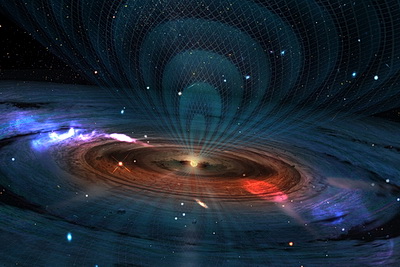
Leave It Up to James Webb
In July 2023, astronomers discovered the most distant active supermassive black hole to date. This gravitational phenomenon is located in galaxy CEERS 1019, which is seen as it was when the universe was just 570 million years old. This is only 100 million years after the Big Bang, making it the earliest active supermassive black hole ever observed.
The Most Distant One – CEERS 1019
The black hole is also one of the least massive seen in the early universe, measuring the equivalent of about 9 million suns. This is much smaller than the supermassive black holes that are typically found in the centers of galaxies, which can weigh billions or even trillions of suns.
The discovery of this early black hole is baffling astronomers since it has been concluded that supermassive black holes form from the gravitational collapse of massive stars, but in this case, is not clear how a star could have formed so early in the universe and grown to be so massive in such a short time.
This raises questions about the evolution of galaxies. It is thought that supermassive black holes play a role in the formation and evolution of galaxies, but it is not clear how. The discovery of this black hole suggests that supermassive black holes may have been more common in the early universe than previously thought and that they may have played a more important role in the evolution of galaxies than we had realized.
Hopefully, it is a case where we have to back to the drawing board, but this black hole is definitely something where additional thought needs to be done where there may be other entities at work here that we just don’t know about – yet!
The Big One
Although the James Webb telescope is bringing never-before-seen wonders to our eyes, the famous Hubble is not without merit.
300 million light-years away at the heart of the Coma Cluster lies one of the largest black holes ever discovered. The Coma Cluster is a large collection of over 1,000 galaxies, which is quite amazing in its own right.
Of these thousands of galaxies is the elliptical supergiant NGC 4889, discovered in 1785 by the British astronomer Frederick William Herschel.
NGC 4889 shines as the largest and brightest galaxy and its supermassive black hole is breaking all kinds of records. In comparison, the mass of the black hole at the center of our Milky Way galaxy is about four million times that of our Sun. The mass of the black hole at the center of NGC 4889 is around twenty-one billion times the mass of our Sun.
Early in its life, astronomers would classify the black hole as a quasar. A quasar is a massive and remote celestial object, releasing large amounts of energy. It is believed that quasars themselves contain massive black holes and are just a stage in the evolution of some galaxies.
At this time as a quasar, NGC 4889’s black hole was devouring all the stars, gas, and galactic dust in its path. This massive meal only fueled the black hole into forming an accretion disc that orbits the black hole and accelerates the black hole’s gravitational pull. The galactic dinner is heated up to millions of degrees and expelled around the black hole up to a thousand times the energy output of our own Milky Way.
Once the supermassive black hole’s appetite was filled and the lavish meal finished, the black hole fell into a deep and dormant state that it is currently in. The environment of the surrounding galaxy is so peaceful that stars are forming from the remaining gas that’s calmly orbiting the black hole.
Quasars and black holes continue to remain mysterious objects to astronomers and scientists. Luckily with new images thanks to various telescopes around the world astronomers can further their knowledge of these objects. Even though it is impossible to directly see a black hole since light can’t escape its gravitational pull, the mass of a black hole can still be determined. Astronomers in Hawaii at the W. M. Observatory and the Gemini North Telescope measured the velocity of stars moving around the center of NG 4889. These instruments determined the massive supermassive black hole.
